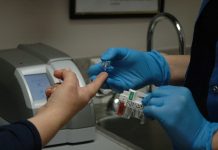Obesity and diabetes mellitus are two nutritional disorders that have become major public health concerns in industrialized countries because of their epidemic proportions and association with major cardiovascular risk factors that are responsible for excess morbidity and mortality. Researchers are looking for ways to combat these diseases. Plant-based, edible compounds are one answer, an animal study finds.
Phytoestrogens: Soy and Flaxseed
Phytoestrogens are a group of biologically active plant-based compounds. Phytoestrogens are present in edible plants which can be classified as isoflavones, lignans and coumestaus. Soybean is an abundant source of isoflavones in the human diet, while flaxseed is the richest source of lignans.
The Effect of Dietary Soy-Protein and Flaxseed on Obesity and Diabetes Earlier studies in obese animals and humans have suggested that soy, as a source of dietary protein, has significant anti-obesity effects. A study conducted in genetically obese mice found that soy protein and its hydrolsate were more effective than whey protein in weight reduction. This effect may be due to an active tetrapeptide present in soy. Several studies reported increased insulin sensitivity in rats fed isolated soy proteins compared with rats fed casein. A 37-kDa protein in soy appears to modulate insulin action on fat decomposition. Studies on the role of flaxseed and its components in obesity and diabetes in humans are limited.
Accordingly, a study entitled, �The Effects of Dietary Soybean and Flaxseed Meal on Metabolic Parameters in a Genetic Model of Obesity and Diabetes,� has been conducted by Sam J. Bhathena, Ph.D., Phytonutrients Laboratory, US Department of Agriculture, Ali A. Ali, Food Science Department, Ain Shams University, Cairo, Egypt, Ali A. Mohamed, Virginia State University, Petersburg, VA, Carl T. Hansen, Veterinary Resources Branch, National Institutes of Health, Bethesda, MD and Manuel T. Velasquez, Department of Medicine, George Washington University, Washington, DC. These investigators will present their findings during the American Physiological Society�s (APS) annual meeting, part of the "Experimental Biology 2002� conference. More than l2,000 attendees are attending the conference , which is being held April 20-24, 2002 at the Ernest N. Morial Convention Center, New Orleans, LA.
Continue Reading Below ↓↓↓
Methodology
Lean and obese rats were fed diets containing either 20 percent casein or 20 percent isolated soybean protein or 20 percent flaxseed meal for 26 weeks. The lean rats were hypertensive while the obese rats showed symptoms of type II diabetes. Obese rats had significantly higher levels of plasma glucose, triglycerides, total cholesterol, (high-density lipoprotein cholesterol (HDL-C) and low-density lipoprotein cholesterol (LDL-C).
Results
- Soybean significantly decreased total cholesterol and LDL in both lean and obese rats but had no significant effect on glucose.
- Flaxseed decreased total cholesterol and triglycerids in both lean and obese rats, but it significantly decreased HDL-C and LDL-C only in obese rats. Flaxseed also decreased glucose in lean but not in obese rats and it had greater effect on various parameters than did soybean.
- Soybean and flaxseed affected plasma lipids and a number of enzymes. They also had varying effects on tissue weights in lean and obese rats. Obese rats compared to lean rats had significantly lower plasma creatinine but higher total bilirubin, blood urea nitrogen, alanine aminotransferase and lactate dehydrogenase. Both soy and flaxseed meal decreased total bilirubin, protein and uric acid in the lean rats, but the effects in obese rats were mixed.
Conclusions
These data suggest that diets rich in soy protein and flaxseed have beneficial effects on many aspects of obesity and diabetes.
The American Physiological Society (APS) is one of the world�s most prestigious organizations for physiological scientists. These researchers specialize in understanding the processes and functions underlying human health and disease. Founded in 1887 the Bethesda, MD-based Society has more than 10,000 members and publishes 3,800 articles in its 14 peer-reviewed journals each year.
Source: American Physiological Society










